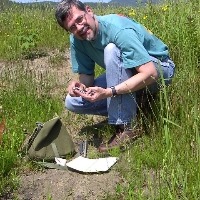So you find yourself owning a big dog. Sometimes, these big dogs act as if they’re just tiny lap dogs, and it’s just adorable to watch.
Dogs, big or small, are a tripping hazard, so it’s important for them to have their own designated space that they can go to and rest without getting disturbed or blocking any doors or anyone’s walking path.

Luckily for one particularly genius dog, a narrow hallway and doors are of no concern for him because he knows where to position himself just right so he won’t block any doors and he can still rest without getting disturbed.
His owners, on the other hand, might need to walk over this very good boy or walk on a tiny space in the already narrow hallway if they need to go to that one side that can be seen in the video.
But honestly, that’s a small price to pay if your fur baby is already cozy and peacefully resting in his perfect spot. In my opinion at least.
 The original video on Instagram and TikTok has just over 64k and 2.1M views respectively, but the reposted version on Facebook has a whopping 5M views!
The original video on Instagram and TikTok has just over 64k and 2.1M views respectively, but the reposted version on Facebook has a whopping 5M views!“Someone please explain how he does this,” asked Kakuna’s owner.
Peregrine, Kakuna’s owner, figured that his dog is simply a mathematician. A lazy mathematician if we take into account Kakuna’s other video here.
“Everyone, just look at this perfectly placed dog. He knows exactly where to sleep in the hallway so that neither of the doors – look at that,” Peregrine pauses to demonstrate just how precise Kakuna’s spot is. “Neither of the doors hit him.”
“How do you do it, Kakuna? How is your spatial reasoning so good?? Who’s a good boy? Who’s a good smart Pythagorean boy?”
I was thinking that maybe dogs in general are really just good at calculating this kind of stuff, you know.
But then I saw one comment under the TikTok video that said, “not to brag, but my dog can place herself perfectly so that she is ALWAYS in my way. Super impressive, I know.”
Maybe Kakuna really is a good, smart, Pythagorean boy…Gosh, if only you could teach dogs these things, then maybe I wouldn’t ever have to trip on my two little doggos every time I try to leave my room.

I am broadly interested in how human activities influence the ability of wildlife to persist in the modified environments that we create.
Specifically, my research investigates how the configuration and composition of landscapes influence the movement and population dynamics of forest birds. Both natural and human-derived fragmenting of habitat can influence where birds settle, how they access the resources they need to survive and reproduce, and these factors in turn affect population demographics. Most recently, I have been studying the ability of individuals to move through and utilize forested areas which have been modified through timber harvest as they seek out resources for the breeding and postfledging phases. As well I am working in collaboration with Parks Canada scientists to examine in the influence of high density moose populations on forest bird communities in Gros Morne National Park. Many of my projects are conducted in collaboration or consultation with representatives of industry and government agencies, seeking to improve the management and sustainability of natural resource extraction.










